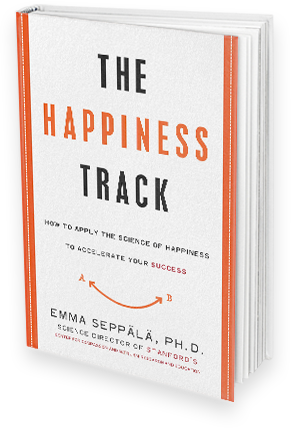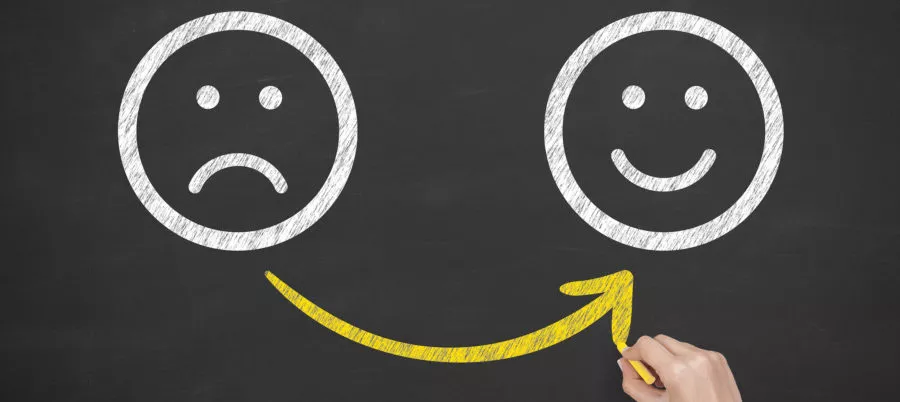Happy students are more likely to persevere in the face of challenges, and more likely to be able to connect the dots between different ideas. Happy teachers also are more effective, says Emma Seppälä, author of The Happiness Track: How to Apply the Science of Happiness to Accelerate Your Success (HarperOne). But we all know that students and educators today face so many stressors, like state-mandated high-stakes tests that lead to anxiety, self-criticism, and unhappiness. In a recent interview with NEAToday, Seppälä describes false myths of success and what educators can do to foster happiness in the classroom.
Let’s talk about the false theory of success that says you can’t have success without stress, that suffering is inevitable and even necessary to attain success in the world. It seems very relevant to classroom culture today. How can teachers today meet the demands on them and their students—without actually harming the health of their students?
Emma Seppälä: Research shows that when we’re in a fight-or-flight situation—you have a test, or a project due—a little stress can actually help you get through that deadline. In that situation, it’s like a little rush of adrenaline that gives us a little extra push. But when stress is chronic, when it becomes fight-or-flight every day, it can actually break you down and cause depletion. You’ll see children who can’t calm themselves down, who can’t even go to sleep—and sleep is one of the most natural functions of our bodies.
One thing we’ve seen to be very helpful in classrooms are mindfulness programs for students, including breathing exercises. These are programs that can teach children to tap into their parasympathetic “rest and digest” nervous system and calm right down. The breathing programs, in particular, are simple and very easy to implement—and research has shown that those students are more focused and less impulsive.
Two other false theories of success, which seem a bit related, are: “Focus on your niche,” which suggests we need to focus on just one area of knowledge to succeed, and also “play to your strengths,” which suggests staying away from areas of weaknesses. In a classroom, that might sound a lot like, “I’m not good at math…” How can educators talk to students about their brains, and their strengths or weaknesses?
ES: They should let them know that their brains are built to learn new things. By learning that fact, they’ll understand their brains can learn anything, if they try. Research shows this message actually makes students more enthusiastic in the face of challenges… Stanford University’s Carol Dweck also has shown how identifying children by “strengths,” saying he’s an artist or she’s a math person, boxes them in and actually makes them less likely to want to try new things or take on new challenges. Instead, the message to students should be: This is your adventure. You can embrace the adventure.
 Let’s talk about creativity. In the book, you suggest allowing your mind to drift, to idle, to unplug. How do you think that might be successfully practiced in a classroom?
Let’s talk about creativity. In the book, you suggest allowing your mind to drift, to idle, to unplug. How do you think that might be successfully practiced in a classroom?
ES: CEOs currently value creativity more than any other trait in the incoming workforce, and yet we’re experiencing a real creativity crisis in the classroom. In the book, I look at Dr. Kyung-Hee Kim’s research, which shows that creativity remains static or declines after sixth grade, and that since 1990 there has been a steady decline in creativity scores. Unfortunately, most of the tests that teachers have to work toward value more narrow thinking, or linear thinking, over divergent thinking, or creative thinking. There is nothing wrong with linear thinking, but there has to be space created for that kind of disruptive, brainstorming type of creative thinking… like an improv comedy class!
So, how about teachers? It’s a pretty stressful job. Are there things they can do for themselves to make themselves happier?
ES:People are happier at work when they have a sense of purpose and meaning, and teachers certainly can tap into a lot of purpose and meaning in their work. But many teachers are stressed out by having to work toward testing, rather than what they’d rather do intrinsically, which is work to inspire students. One thing they can do is take care of their own minds; take a mindfulness approach to reducing their own stress. The other thing they can do is take a more empathic, compassionate approach to their students. It may sound soft, but there is so much data to back this up. If teachers can approach their students as they would their own children, with loving attention, their own health and well-being will improve.


